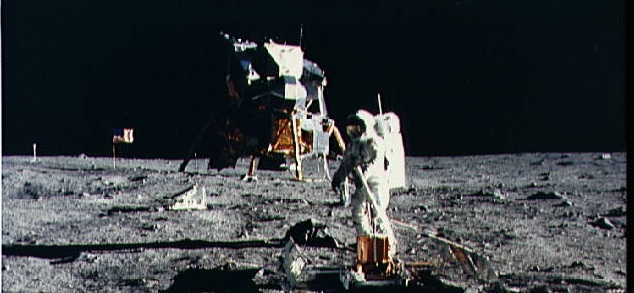NASA Prepares For Annoying Space Tourists
It Came From Outer Space

Although it’s been a few years since Lance Bass tried to travel to outer space, and it will probably be a few years until space tourism is viable, NASA is already looking into ways to preserve and protect U.S. lunar artifacts from unruly tourists. You know, the ones that wear fanny packs and touch things they’re not supposed to?
According to Blastr, among the NASA scientists advocating for guidelines to space tourism are anthropologist Beth O’Leary, Robert Kelso, a NASA employee of more than 30 years who used to run the agency’s lunar commercial services, and archaeologist Lisa Westwood, who co-founded the Apollo 11 Preservation Task Force. Together, they wrote an article for The Washington Post explaining the importance of preserving historical areas on the moon, like the place where Neil Armstrong and Buzz Aldrin landed the Apollo 11 in 1969:
“The reality of imminent commercial space tourism is exciting — and threatening,” they wrote. “The temptation for tourists to visit Tranquility Base, to walk in Armstrong’s footsteps or to pocket some small treasure as a keepsake may be too strong to resist. Artifacts too small to notice may be trampled. Those too large to move may be vandalized. The three-dimensional relationship of these objects — which tells the story of the Apollo 11 crew’s activities and makes the site so significant — could be destroyed. The integrity of this historical site could be irreparably damaged. It is imperative that these artifacts be protected in their current positions.”
After receiving a request from the Google Lunar X Prize (a foundation offering $30 million in prizes are available to the first privately funded teams to safely land a robot on the surface of the Moon) to explore how to visit the Apollo landing sites, NASA drafted lunar-friendly tourism recommendations entitled “NASA’s Recommendations to Space-Faring Entities: How to Protect and Preserve the Historic and Scientific Value of U.S. Government Lunar Artifacts.” Technically NASA can only recommend protections for our country’s historical space artifacts because, while, according to international treaties, we definitely own anything left behind by astronauts or unmanned Surveyor probes, the moon’s surface itself belongs to no one. So, although Google pledged to honor the recommendations presented in the paper, that doesn’t preclude them from doing a 180 and letting whoever touch all the moon things.
But NASA hasn’t lost hope yet — O’Leary, Westwood and Kelso are working with Rep. Dan Lungren (R-Calif.) to draft legislation to make Tranquility Base, Apollo 11’s landing site, a national historic landmark. Once it achieves status as a national landmark, it will be eligible for inclusion on the UNESCO list of World Heritage sites, sanctioning its protection globally and finally ensuring that we won’t muck up history with our grubby space tourist hands.
(via Blastr.)
Have a tip we should know? tips@themarysue.com